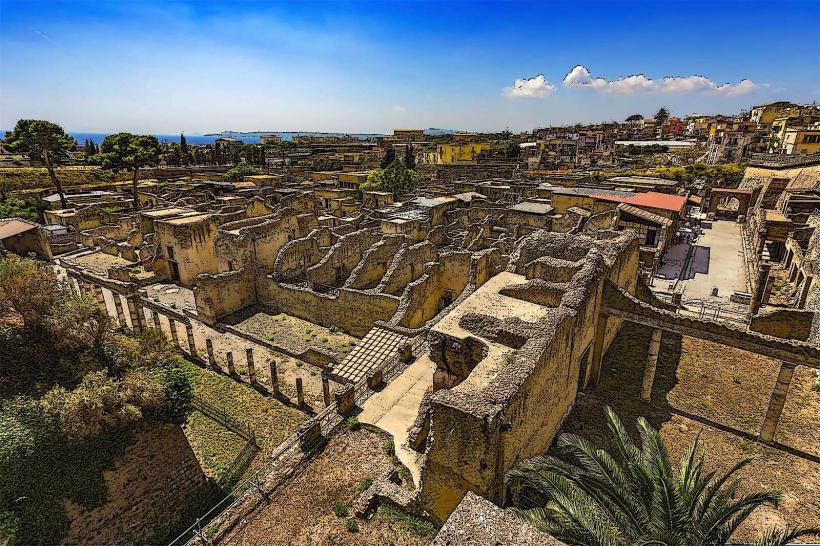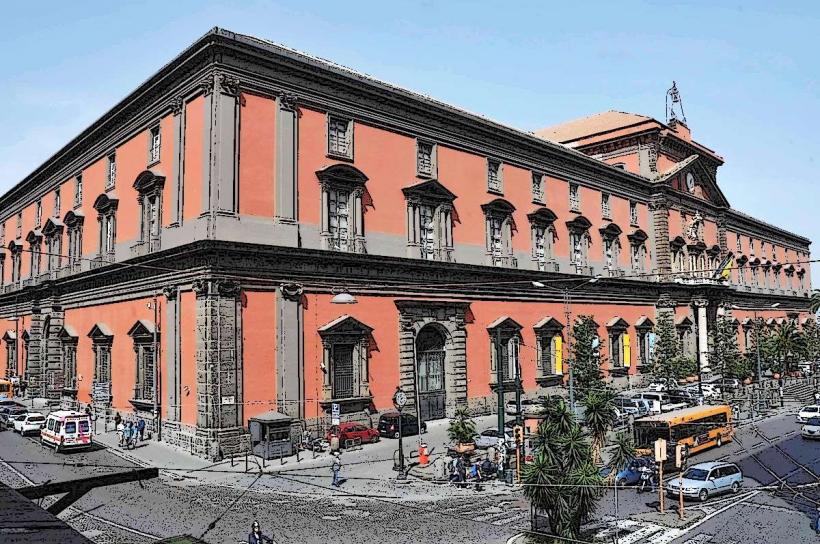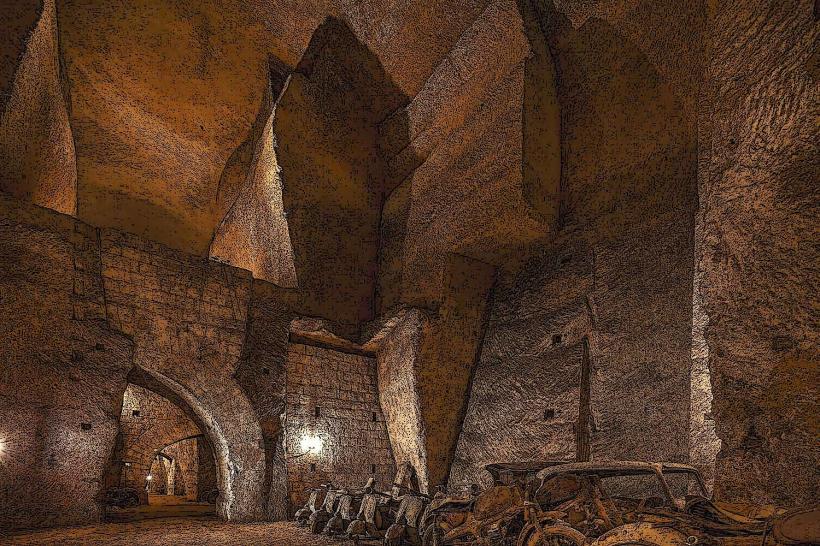Information
Landmark: Castel NuovoCity: Naples
Country: Italy
Continent: Europe
Castel Nuovo (also known as Maschio Angioino) is one of Naples' most iconic landmarks, a historic fortress that has played a crucial role in the city's history for over seven centuries. Located at the edge of Piazza del Municipio, near the city’s waterfront, it has witnessed numerous historical events and has served various functions, from royal residence to military stronghold.
1. History and Origins
- Castel Nuovo was originally built in the 13th century, around 1279, under the orders of Charles I of Anjou, the King of Naples. The castle was constructed as a new royal residence for the Angevins, a powerful French dynasty that ruled Naples at the time.
- The castle was designed to be a symbol of power and authority, both as a royal residence and as a fortress. Over the centuries, it has undergone multiple expansions, restorations, and changes in ownership, reflecting the shifting political and military landscape of Naples.
- It has had several important historical roles throughout its long history, including as the seat of power for successive kings, a military garrison, and even a prison.
2. Architectural Features
- Castel Nuovo is a fortified castle built in a combination of Romanesque, Gothic, and Renaissance styles, representing different architectural periods as the castle was expanded and renovated over time.
- The original design by the French architect Pierre de Chaule featured a massive central keep and four corner towers. Its thick walls, drawbridge, and moat were designed to make it an impregnable fortress.
- The main entrance, known as the Triumphal Arch, is one of the most striking features of the castle. It was added in the late 15th century and is an Renaissance-style archway, designed by the architect Giuliano da Maiano. The arch is decorated with reliefs and inscriptions celebrating the achievements of the Aragonese kings who ruled Naples in the 15th century.
- The castle has several courtyards, defensive walls, and towers, with a large central courtyard that leads to the various rooms and chambers inside the fortress.
3. Historical Significance
- Royal Residence: Charles I of Anjou commissioned the construction of the castle as a royal residence, and it served as the seat of the Angevin dynasty. His descendants, including King Robert of Anjou, also resided here during the 14th century.
- Aragonese Period: In the 15th century, after the Aragonese conquest of Naples in 1442, Alfonso I of Aragon (known as Alfonso the Magnificent) took control of the castle. He commissioned significant renovations, adding the Triumphal Arch and other elements to reflect the power of his dynasty.
- Spanish and Bourbon Rule: Under Spanish and later Bourbon rule, the castle continued to serve military and administrative purposes. During the Spanish occupation of Naples, the castle became a symbol of Spanish power and control in the region.
- Napoleon and Modern History: The castle also played a role during the Napoleonic era when Naples was occupied by French forces, and later during the unification of Italy in the 19th century. It was used as a military barracks and as a prison during various periods of conflict.
- The castle has been the site of significant historical events, including the coronation of the first Aragonese king of Naples and the conquest of Naples by Alfonso of Aragon.
4. The Castel Nuovo’s Role as a Museum
- Castel Nuovo today functions as a museum and cultural center, where visitors can explore its fascinating history through exhibits, art, and interactive displays. The castle is home to a variety of historical collections, including sculptures, paintings, and artifacts related to Naples' royal and military past.
- Some of the museum’s most notable exhibitions include:
- The Royal Apartments: A series of rooms showcasing the royal history of the castle, with decorative elements, frescoes, and period furniture from the Angevin and Aragonese periods.
- Sculptures: The castle features a collection of sculptures, including works by renowned artists from Naples' past, with many of them displayed in the Triumphal Arch and central courtyard.
- Historical Artifacts: Exhibits focus on the historical significance of the castle and Naples itself, showcasing artifacts from the Angevin, Aragonese, and Bourbon periods, as well as remnants of Napoleon’s rule.
5. Triumphal Arch and Renaissance Influence
- The Triumphal Arch, which forms the main entrance to the castle, is one of its most famous features. Constructed in 1467, this Renaissance-style arch celebrates the victory of Alfonso I of Aragon over the rival Angevin forces.
- The arch is adorned with reliefs, inscriptions, and bronze portraits, highlighting the military victories and royal achievements of Alfonso and his successors.
- The design of the arch represents a transition from medieval military architecture to the more refined Renaissance style, marked by an increased focus on symmetry, proportions, and classical influences.
6. Visitor Experience
- Opening Hours and Admission: The castle is generally open to the public most days of the week, with occasional closures for maintenance or special events. Admission fees typically apply, and special discounts or free access may be available for certain groups (such as students or residents).
- Guided Tours: For visitors interested in a more in-depth understanding of the castle's history, guided tours are available. These tours typically include explanations of the castle’s role throughout history, its architectural features, and the legends associated with it.
- Exhibitions: The museum frequently hosts temporary exhibitions, including art displays, historical retrospectives, and cultural events.
- Views of the City: The upper levels of the castle offer excellent views over Piazza del Municipio, the Gulf of Naples, and the Vesuvius volcano, providing a beautiful backdrop to the castle’s historical features.
7. Conclusion
Castel Nuovo (Maschio Angioino) stands as a monumental symbol of Naples' rich history, offering a deep dive into the city’s royal and military past. From its origins as a royal residence for the Angevin kings to its transformation into a military fortress and museum, the castle is an essential part of the cultural and historical heritage of Naples. Today, it continues to attract visitors from around the world, offering a blend of history, art, and architecture in one of Naples' most iconic landmarks.
























